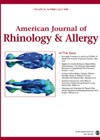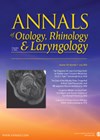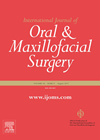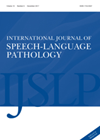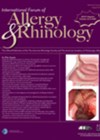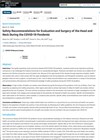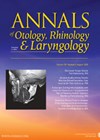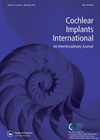
Journal Reviews archive for 2020
Prevention better than cure?
This systematic review looks at methods of ‘barrier protection’ or ‘barrier-enforcing’ to minimise allergic rhinitis symptoms, using 15 RCTs. Whilst the authors admit that patient numbers were small in a number of these studies, generally it seems that barrier techniques...
A new tool for assessing otoscopy skills
Medical and audiology students need to be proficient in performing otoscopy in order to undertake the routine practice required of them at work upon graduation. One significant challenge in teaching otoscopy is the lack of objective and validated assessment tools...
Fibula free flap virtual or freehand planning and the efficiency of surgery
This is a systematic review from surgeons in Italy and Florida where, from an initial 799 potentially relevant articles, only six could be included. Efficiency was assessed by the mean ischemia time which, for the virtual group, was 73.8 minutes,...
Speculating on saliva during endoscopy
It has been noted that the presence of saliva in the pharynx and larynx during flexible endoscopic evaluation of swallowing (FEES) can be an indicator of increased risk of aspiration and consequent pneumonia, as well as weight loss and malnutrition....
Future practice: tele-rehabilitation in speech and language therapy
It is known that our population is ageing, resulting in an increase in the number of people living with progressive neurological conditions such as Parkinson’s disease. Health services endeavour to deliver specialist and personalised care to all these people, often...
People with language-led dementia in India
Primary Progressive Aphasia (PPA) is a language led dementia characterised by slowly worsening speech and language. It is associated with atrophy of the dominant temporal-parietal lobe regions and is commonly caused by frontotemporal or Alzheimer’s pathologies. There are three PPA...
Speedy speedy: people with MND chew faster but speak slower
Motor Neurone Disease (MND) is a progressive neurological condition that affects motor neurons in the brain, brainstem and spinal cord, affecting the control of skeletal muscles for speech, chewing and swallowing. There are two variants of MND, with symptoms typically...
Location, location, location: How to get the steroid where you need it, in chronic rhinosinusitis
What almost all current guidelines on chronic rhinosinusitis have in common is the importance of intranasal steroid (INCS) use. However, it is increasingly understood that the efficacy of INCS depends on their efficient delivery to the point of need, i.e....
Safety recommendations for ENT surgeons during the COVID-19 pandemic
Physicians and other healthcare workers who perform and participate in examinations and procedures within the head and neck region and airway are at particularly high risk of exposure and infection from aerosol and droplet contamination. Authors have developed recommendations to...
Thyroidectomy and hypnosis
This is a retrospective study comparing thyroidectomy under conventional general anaesthesia and surgery under hypnosis. Patients are interviewed and evaluated before the surgery and the process explained. During the surgery, they are induced into a hypnotic trance in a controlled...
Laryngopharyngeal reflux - would mucolytics help?
With laryngopharyngeal reflux (LPR) being such a common presenting complaint to ENT clinics, who would not want to have more, effective treatment options for patients suffering with this annoying condition? In their small randomised, controlled trial, Chae et al put...
Quality of life in adolescence
Adolescence can be a difficult time and the added complexity of a hearing loss can exacerbate feelings during this period. In the literature, there are mixed findings that show while some children with hearing loss score poorly on some aspects...

